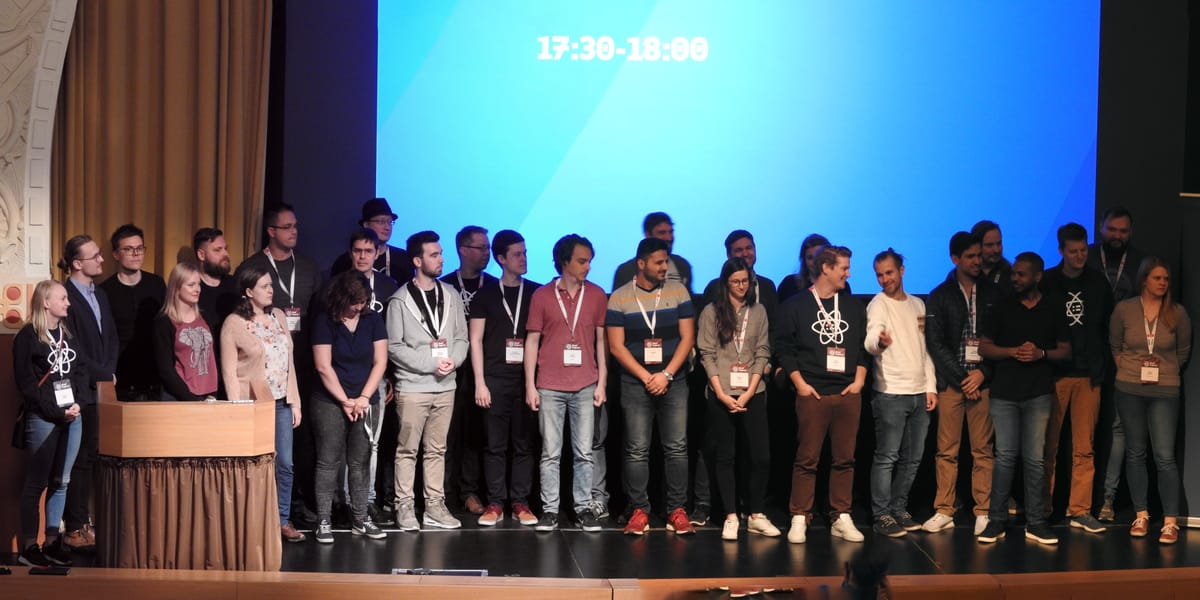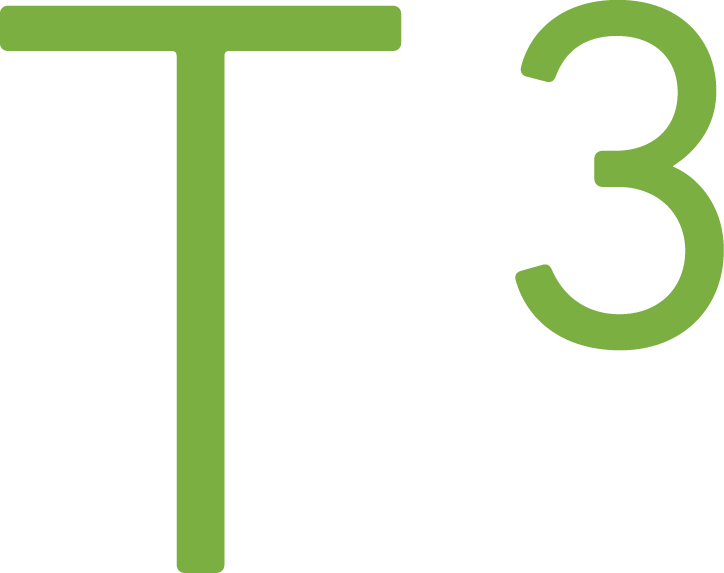React Finland 2019 Recap

The photo was taken by Kenneth Sutherland. Had to clip one of the organizers (Juho) away from the right edge of the photo, to maintain the 2:1 aspect ratio. Sorry, Juho!
The React Finland is a two-day one-track conference with an additional day for the workshops. I had the pleasure to participate the React Finland 2019, and in this blog post, I'll try to give a recap of the event.
Before we start
The most important part first, big thanks to the organizers. Without the organizers, there would be 0% chance of having this kind of event. Each year the conference gets better and better, so I am looking forward to participating React Finland 2020 event. 2020 sounds like far future, but believe or not, it is the next year.
Equally important are speakers, sponsors, and attendees. Thank you!
Now, back to the recap.
Overview
The second React Finland was held in Paasitorni which is a historical building in Hakaniemi. It is a perfect location as it very close to the city center, and the trams and buses stop near the venue.

By MyName (Mahlum) - Own work, Public Domain, Link
The venue felt more spacious than last year's Valkoinen Sali. What I had from workshop participants they also liked that each workshop got their room, unlike Valkoinen Sali where the workshop that I attended was behind a curtain.
All talks were in the main hall, so there was no thinking in which room or hall I should be in and what time.
The organizers and the venue's staff did terrific work, and everything worked smoothly.
In addition to talks and workshops, there were also pre-conference events (such as visiting Helsinki's tourist attractions), entertainment and after party. I only attended after party which was held in Tiivistämö.
Talks
Each conference day had themes. The themes were, state management, design systems, testing, case studies, visual, React Native, tooling, and performance.
To give an example of how a theme worked, Andrey Okonetchnikov's talk was more about high-level concepts like having the same language when describing user-interfaces and Varya Stepanova's talk more about applying design system to client work. These talks go very well hand in hand.
I think "case studies" group had the wrong title; at least, it didn't match my definition of a case study.
The overall quality of the talks was good and topics well-chosen. It is hard satisfy everyone's need, but, I think for those who are actively following the React and open-source scene some of the ideas and even stories have been repeated quite often.
In some cases, it was hard to decide if the content will bring new information to an experienced developer. Some of the talk titles and descriptions clearly stated that this talk would have something I have absolutely no idea of, so I put extra attention to these ones.
I was quite surprised to see that there were no talks about React itself and it's future, for example, hooks, Suspense, etc. Maybe organizers assumed that everyone already knows these, but what I have seen in the real-life projects, the React is not necessarily updated immediately when new version comes out even though there is a migration path and little amount of breaking changes. Biggest reason for postpone are the 3rd party libraries and tooling (for example, linting) that needs to work perfectly with the shiny new React features.
Talk highlights:
Disclaimer: this is my personal experience and it might be that I missed some talks that should have been on the list. You need to do your own assessment if the talk is worth your time as the mileage may vary. Please, proceed to the list.
Mind-Reading with Adaptive and Intelligent UIs in React. David Khourshid is a rock-solid speaker. His talks always bring me new ideas, the right amount of information with the right pacing, examples are easy to understand and concrete. I also liked the React Finland 2018 talk he gave. It is wonderful to see how he linked this year's topic to the previous one without giving a feeling that you missed something.
Append-only development with React. I know concepts from event sourcing, but Luca Matteis introduced me to Behavioral Programming which I had not heard of. The topic is probably fairly large and mainly explored in academia, but Luca gave a great introduction to the topic.
A Common Design Language. Let Designers and Developers talk to each other. Andrey Okonetchnikov
If you're into Gatsby or you're interested in static site/app generators then Gatsby + Themes: The Future of Gatsby might be interesting for you. I have been converting my website and blog to Gatsby. I am not in love with Gatsby just yet as the whole process has been painful, but the enthusiasm and the quality of presentation given by Dustin Schau gave me more energy and inspiration to finish the conversion. See also, Carolyn Stransky's presentation on Intuitive Tooling which is loosely related to the Gatsby and my problems with it.
If you haven't used TypeScript or Flow yet, you might want to check All aboard the type train by Kadi Kraman and Scalable (Design) Systems with TypeScript by Tejas Kumar. The first one is more about the benefits of type systems and why TypeScript might be a better choice. Tejas talk was full of positive energy and gave ideas on how types and Monaco editor can be used in design systems and documentation. Both very-well presented talks.
Creating layouts that last. Artem Zakharchenko introduced the problem most developers have with layouts and then explained his solution to the problem. I was amazed when I read (or heard, can't remember) that this was his first conference talk! Top-notch talk with good examples on how to use his library.
Building resilient frontend architecture. I think Monica Lent's talk was like a school book example of how to give a great presentation. It was entertaining and thoughtful at the same, and the examples she gave was so spot on that I thought she is talking about me or my colleagues. The talk was about constraints and how constraints can help prevent architecture from becoming a big ball of mud.
Practical Performance for React (Native). Precisely what the talk title promised. Solid talk from Anna Doubková and you could hear that these tips are from a real-world project.
The Untouchable Web. Rick Hanlon reminded us that buttons are hard to implement right. ;)
"Intuitive" Tooling. I found this talk to be different from others and it was a great way to end the conference. I think it's best to just watch Carolyn Stransky talk when it is published and forget my ramblings.
Random links
These are some of the links I have collected during presentations or from the Slack-channel.
